The vibrant flash of orange and black as an oriole visits a backyard feeder represents more than just a moment of beauty—it’s part of an evolving relationship between humans and wildlife. Across North America, birdwatchers are discovering that attracting these stunning songbirds requires specialized knowledge and careful consideration. The growing interest in oriole-specific feeding practices has revolutionized backyard birdwatching, creating more sustainable and ethical approaches to enjoying these seasonal visitors. As we learn more about oriole behavior, diet, and migration patterns, bird enthusiasts are adopting methods that support oriole health while enhancing the birdwatching experience. This shift represents a broader trend toward conservation-minded bird feeding that prioritizes the well-being of the birds we admire.
Understanding Oriole Species in North America
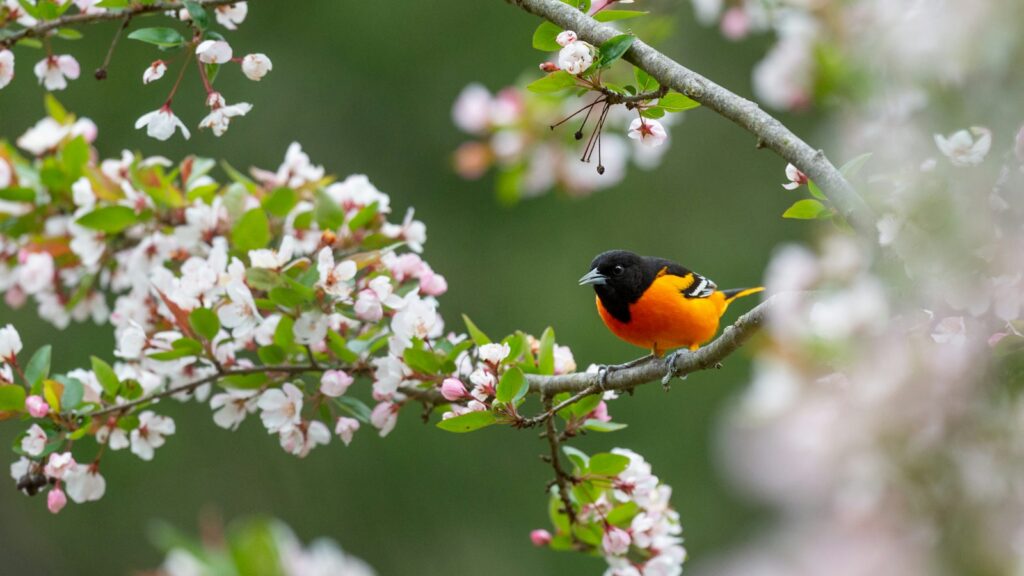
North America hosts several striking oriole species, with the Baltimore Oriole in the east and Bullock’s Oriole in the west being the most commonly encountered in backyard settings. The vibrant orange-and-black Baltimore Oriole migrates annually between breeding grounds in the northeastern United States and Canada to wintering areas in Mexico and Central America. Bullock’s Orioles display similar coloration but inhabit western regions, while the golden Hooded Oriole frequents the southwestern states and California. The Orchard Oriole, North America’s smallest oriole species, exhibits more subtle coloring with chestnut replacing the brilliant orange of its relatives. Understanding which species visit your region helps tailor feeding approaches to their specific requirements and migration timing.
The Natural Diet of Orioles
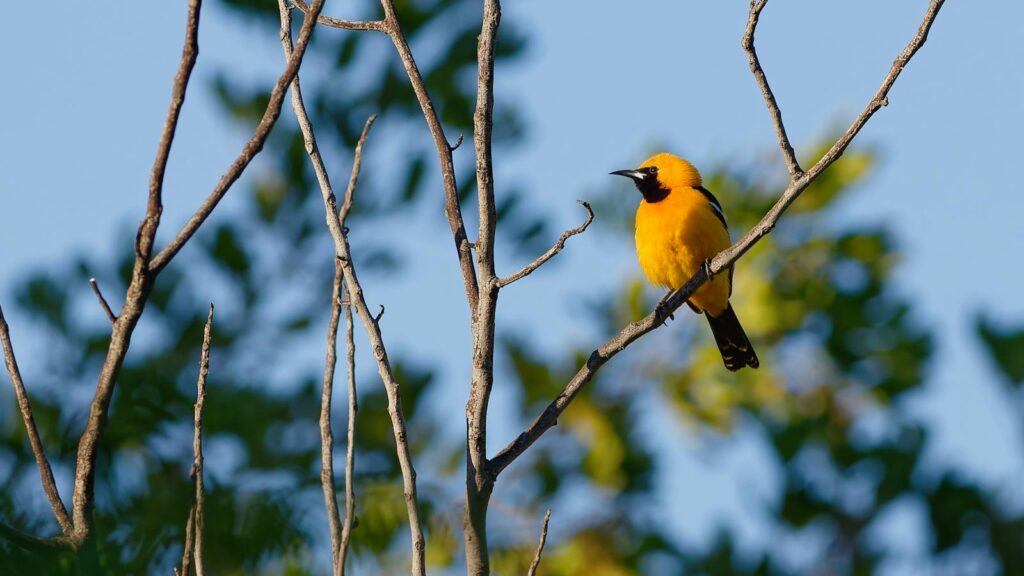
In their natural habitat, orioles maintain a diverse and seasonally varied diet that influences their health and behavior. During spring and summer, these birds consume significant quantities of protein-rich insects, particularly caterpillars, which provide essential nutrients for breeding and raising young. As the seasons progress, orioles incorporate increasing amounts of fruit into their diet, with wild berries, mulberries, and native fruits forming a crucial energy source during migration periods. Many oriole species also consume nectar from flowers, using their specialized brush-tipped tongues to extract this high-energy food source from trumpet vines, jewelweed, and other nectar-producing plants. Understanding this natural dietary pattern helps birdwatchers provide appropriate supplemental foods that complement rather than replace the orioles’ wild foraging behaviors.
Traditional Oriole Feeding Practices and Their Problems

Traditional approaches to feeding orioles have often relied heavily on sugar water solutions and commercial jellies that may create unintentional consequences for these beautiful birds. Many commercial grape jellies contain high-fructose corn syrup, artificial colors, and preservatives that provide calories but limited nutritional value for orioles. Improperly maintained sugar water feeders can harbor harmful bacteria and mold, potentially causing illness in visiting birds if not cleaned regularly. Some traditional orange halves offered on feeders may be treated with pesticides or preservatives unless specifically purchased as organic, introducing chemicals into the orioles’ diet. Additionally, year-round feeding practices can sometimes disrupt natural migration patterns or create unhealthy dependencies, highlighting the need for more informed approaches to oriole feeding.
Designing Bird-Safe Oriole Feeders
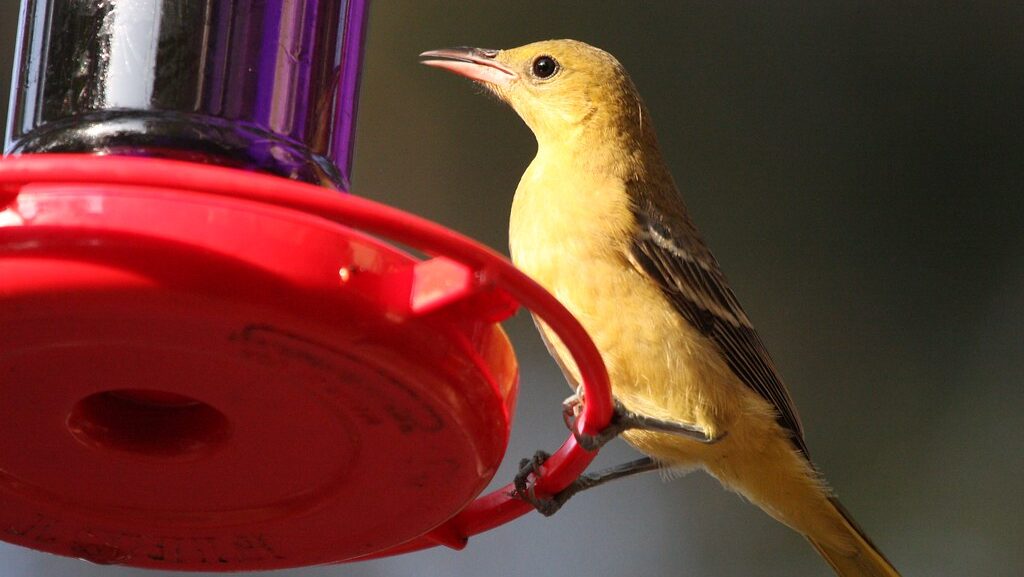
Modern oriole feeder design focuses on both functionality and safety features that protect these colorful visitors. Quality oriole feeders now incorporate bee guards and specialized feeding ports that prevent insects from contaminating nectar while allowing orioles to access food with their longer bills. Materials matter significantly, with durable UV-resistant plastics or glass components that won’t leach chemicals into food and can withstand weather extremes without degrading. The most effective feeders feature multiple feeding stations to reduce competition and include perches positioned at appropriate distances from feeding ports to accommodate the orioles’ natural feeding posture. Advanced designs also incorporate easy-cleaning features with dishwasher-safe components that simplify the essential maintenance routine required for bird health and safety.
Creating Healthy Nectar Solutions
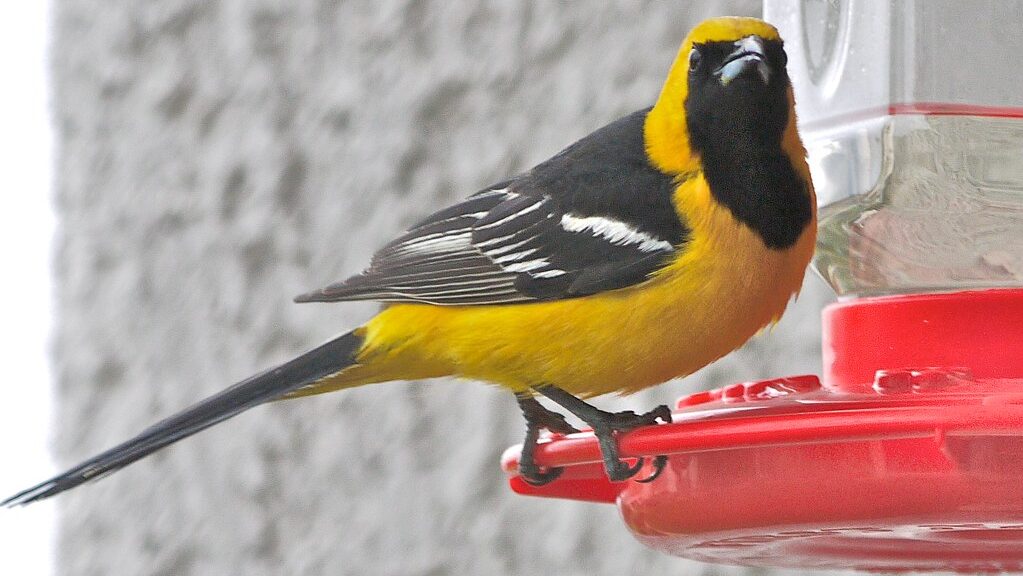
Preparing appropriate nectar solutions for orioles involves understanding both the birds’ nutritional needs and food safety principles. The ideal homemade oriole nectar consists of a simple ratio of one part white granulated sugar to four parts water, boiled briefly to dissolve the sugar and kill any potential pathogens. Unlike hummingbird nectar, which uses the same recipe, oriole nectar can be slightly more concentrated in some cases (1:3 ratio) to attract these larger birds, though experts generally recommend maintaining the standard dilution. Commercial nectar mixes containing preservatives, artificial colors, or additional ingredients should be avoided, as these additives provide no benefit to orioles and may potentially cause harm. Fresh nectar solutions should be replaced every two to three days during hot weather and at least weekly in cooler conditions to prevent fermentation or bacterial growth that could sicken visiting orioles.
Beyond Sugar Water: Natural Fruit Options
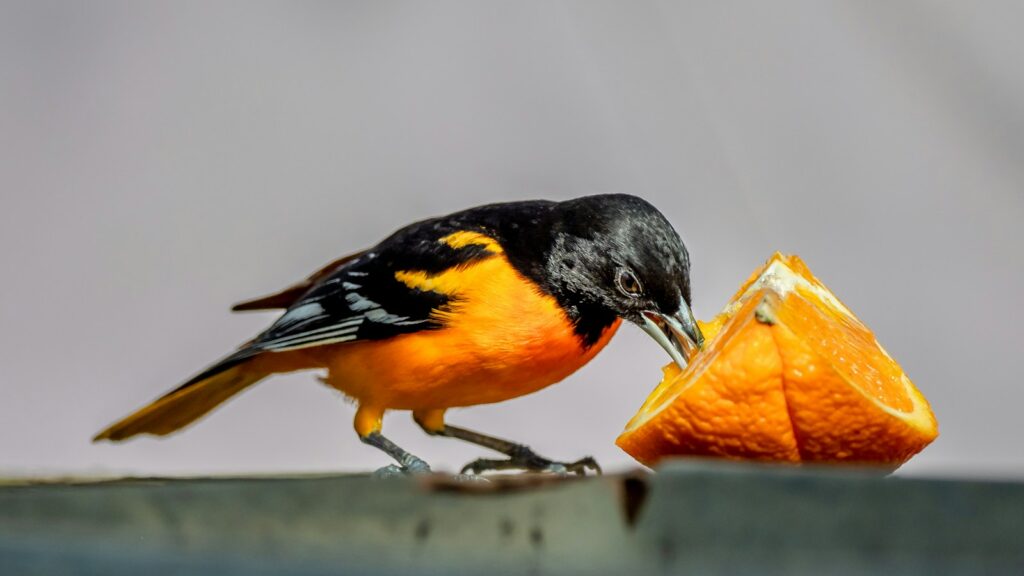
Expanding oriole feeding beyond sugar water creates a more nutritionally complete offering that better mimics these birds’ natural diet. Fresh orange halves remain the classic oriole attractant, providing vitamins and natural sugars while the bright color serves as a visual beacon for passing birds. Many bird enthusiasts have success offering dark cherries, blackberries, blueberries, and raspberries, which contain antioxidants and nutrients absent in sugar water alone. Some orioles readily accept small pieces of banana, mango, or grapes, though these should be offered in specialized fruit feeders that protect them from spoiling and attracting unwanted pests. For optimal bird health, all fruit offerings should be unsweetened, untreated, and replaced daily, especially during warm weather when spoilage occurs rapidly.
Protein Sources: Meeting Critical Nutritional Needs

Incorporating protein sources into oriole feeding stations addresses a crucial dietary requirement often overlooked by casual birdwatchers. During breeding season, parent orioles hunt almost continuously for protein-rich insects to feed their rapidly growing nestlings, making supplemental protein offerings particularly valuable when natural food may be scarce. Some dedicated oriole enthusiasts offer small amounts of mealworms, either live or dried, which orioles readily accept and which provide essential amino acids and nutrients. Specialized commercial oriole foods now sometimes include insect proteins blended with fruit ingredients to create more nutritionally complete offerings that support overall bird health. Research indicates that orioles with access to diverse food sources including proteins produce more successful nests and healthier offspring, demonstrating the value of this broader feeding approach.
Seasonal Feeding Strategies: When to Feed Orioles

Strategic timing of oriole feeding aligns with these birds’ natural migration patterns and changing nutritional needs throughout the year. In most northern regions, oriole feeders should be placed outdoors in late April or early May, approximately two weeks before the expected arrival of the first migrating birds, allowing early scouts to discover food sources. During spring migration and the subsequent nesting period, orioles benefit most from high-energy foods and protein sources that support breeding activities and nestling development. As summer progresses into fall, feeders become crucial refueling stations for orioles preparing for and undertaking their southward migration, with many experts recommending continued feeding until approximately two weeks after the last oriole has been observed. In southern states and regions where orioles may overwinter, year-round feeding can be appropriate, though still with seasonal adjustments to match natural dietary shifts.
Feeder Placement and Garden Design for Oriole Success
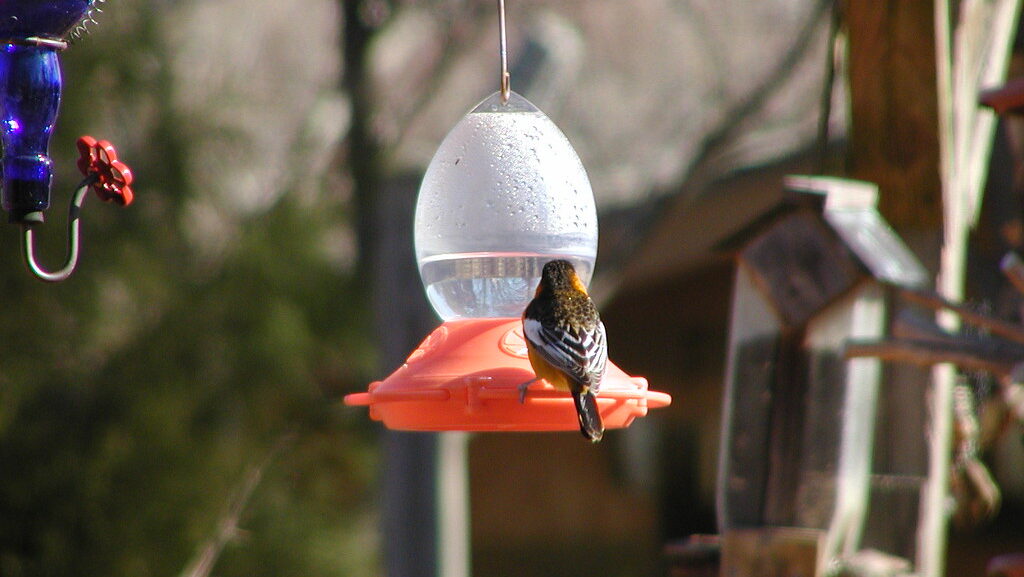
Strategic positioning of oriole feeders significantly impacts both bird safety and visitation rates in backyard settings. Optimal placement includes hanging feeders approximately 7-10 feet above ground level, ideally near trees that provide immediate cover for orioles if threatened by predators. Since orioles typically forage in the upper canopy of trees, feeders positioned at these heights align with their natural feeding behaviors while remaining visible enough for bird watching. Creating multiple feeding stations spaced throughout larger properties reduces competition and territorial disputes between birds, enhancing the feeding experience. Thoughtful garden design that incorporates native fruit-bearing trees and shrubs like serviceberry, mulberry, and wild cherry provides natural food sources that complement feeder offerings while creating a comprehensive habitat that supports orioles throughout their breeding season.
Essential Cleaning Protocols for Oriole Feeders
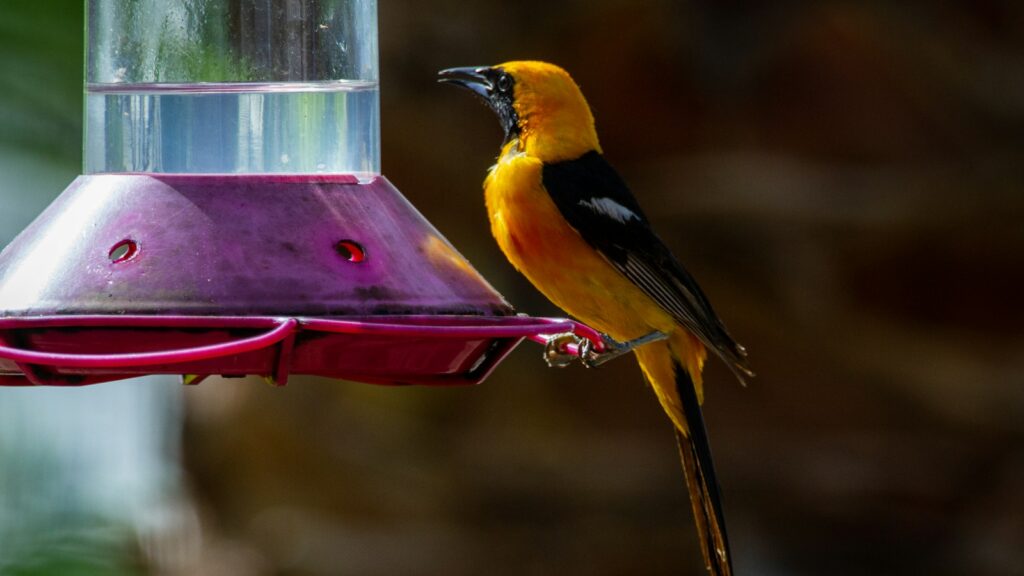
Maintaining impeccable cleanliness of oriole feeders represents one of the most critical aspects of responsible bird feeding practices. Every oriole feeder should undergo thorough cleaning at least twice weekly during hot weather and weekly during cooler periods, using a solution of one part white vinegar to four parts water to sanitize all surfaces. Stubborn residues can be safely removed with a bottle brush, small pipe cleaners for feeding ports, and an old toothbrush for reaching crevices, ensuring all sugar film and mold are completely eliminated. After cleaning, feeders must be thoroughly rinsed with clean water to remove any vinegar residue before refilling with fresh food. Implementing a rotation system with multiple feeders allows continuous food availability during cleaning processes, ensuring orioles don’t abandon your yard due to temporary food shortages while supporting their health through impeccable feeder hygiene.
Creating a Complete Oriole Habitat
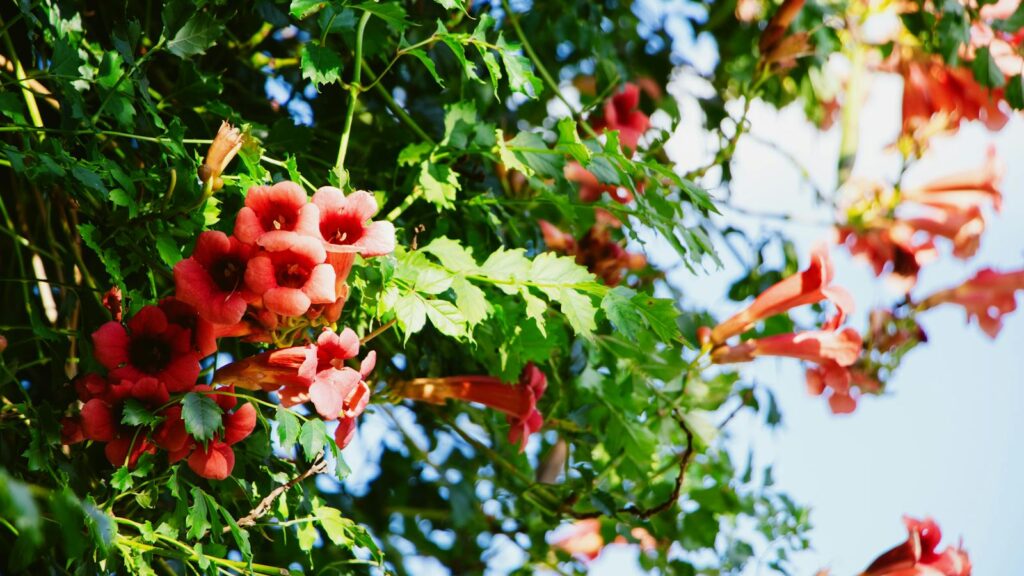
Beyond feeders, creating a comprehensive oriole-friendly environment transforms casual bird feeding into meaningful habitat support for these declining songbirds. Water features like shallow birdbaths or gentle misters provide essential bathing and drinking opportunities, especially during hot summer months when orioles actively seek water sources. Native flowering plants such as trumpet vine, jewelweed, and cardinal flower offer natural nectar sources while attracting insects that form a crucial part of orioles’ diet during breeding season. Strategic landscaping that incorporates orioles’ preferred nesting trees—including American elms, maples, sycamores, and cottonwoods—provides essential breeding habitat that extends beyond feeding alone. Some dedicated bird enthusiasts even offer natural nesting materials like plant fibers, pet fur, and thin strips of bark that female orioles collect to construct their distinctive hanging sock-like nests, creating a complete ecosystem support system in their yards.
Monitoring and Community Science: Contributing to Oriole Conservation
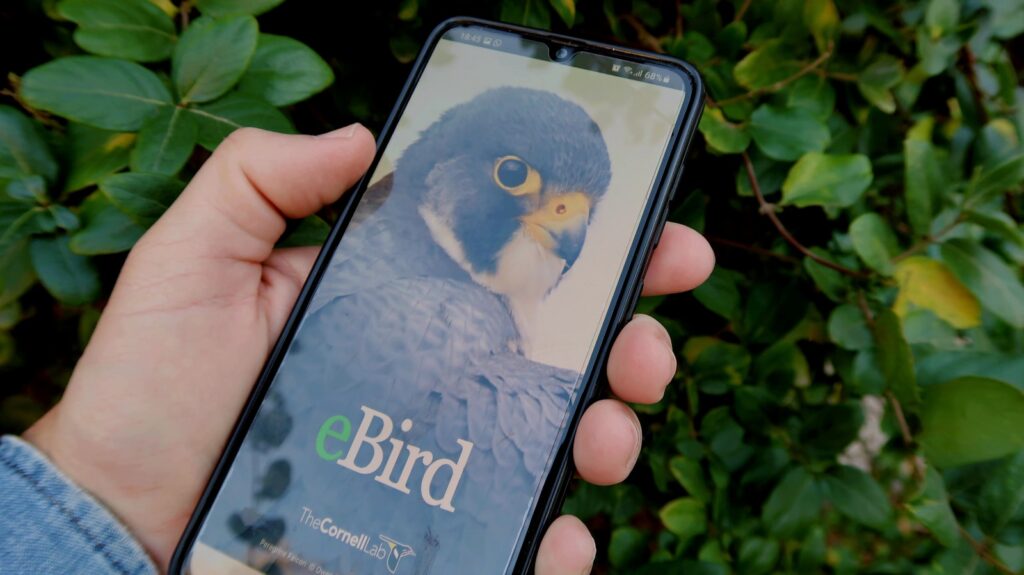
The evolution of oriole feeding practices has coincided with growth in community science initiatives that transform backyard birdwatching into valuable conservation data. Many oriole enthusiasts now participate in formal monitoring programs like Project FeederWatch, eBird, and specialized oriole tracking projects that collect observations on arrival dates, feeding behaviors, and population trends. These structured reporting systems allow researchers to compile data across wide geographic regions, creating valuable insights into how oriole populations are responding to climate change, habitat loss, and other environmental pressures. Some dedicated birdwatchers even participate in specialized projects that monitor oriole nesting success or track individual color-banded birds across seasons, providing crucial information about survival rates and site fidelity. By combining ethical feeding practices with systematic observation and reporting, backyard bird enthusiasts contribute meaningfully to scientific understanding and conservation of these beloved birds.
The Future of Ethical Oriole Feeding
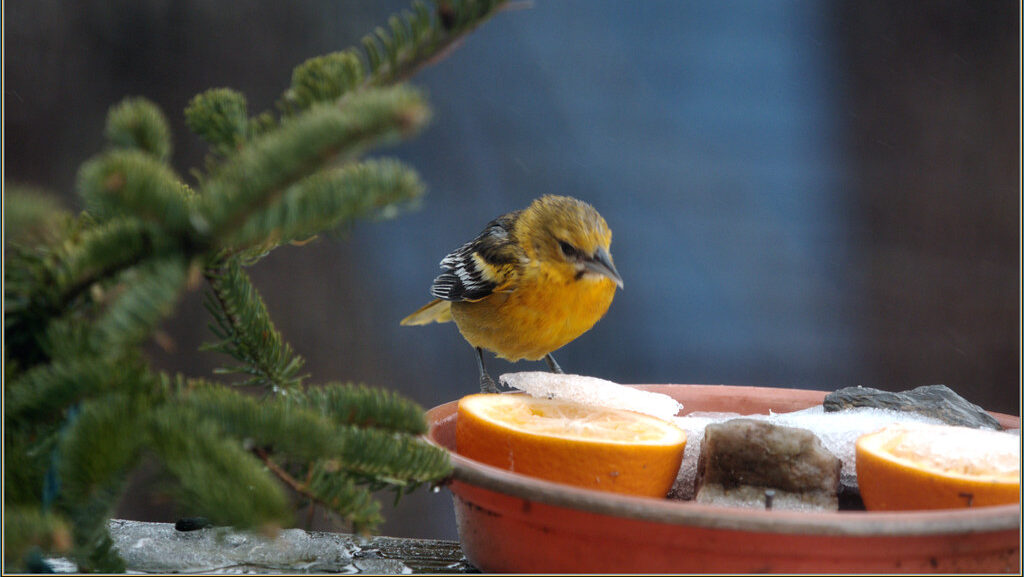
As our understanding of oriole biology continues to deepen, feeding practices are evolving toward approaches that more fully support these birds’ complete lifecycle needs. Research into oriole nutrition is guiding development of specialized commercial feed products that better match the birds’ natural diet while maintaining convenience for birdwatchers. Conservation organizations increasingly promote “migration-aligned” feeding practices that adjust offerings seasonally to support orioles’ changing nutritional requirements throughout their annual cycle. Advanced feeder technologies now emerging include designs with antimicrobial components, solar-powered features that improve functionality, and even specialized openings sized specifically for orioles that exclude competing species. As backyard birdwatching continues growing in popularity, this synthesis of scientific knowledge and practical application promises healthier oriole populations while enhancing the birdwatching experience through more meaningful connections with these remarkable birds.
Conclusion

The transformation in how we approach oriole feeding represents a significant evolution in backyard birdwatching—one that prioritizes bird welfare while deepening human connection to wildlife. By moving beyond simplistic sugar water offerings to comprehensive feeding strategies based on scientific understanding, bird enthusiasts create more meaningful interactions that support oriole health throughout their lifecycle. This shift toward evidence-based practices exemplifies how recreational birdwatching can contribute to conservation while providing the joy of observing these stunning orange songbirds. As we continue refining these approaches, the relationship between orioles and their human admirers grows increasingly symbiotic, ensuring these brilliant birds remain a vibrant part of our natural world for generations to come.
